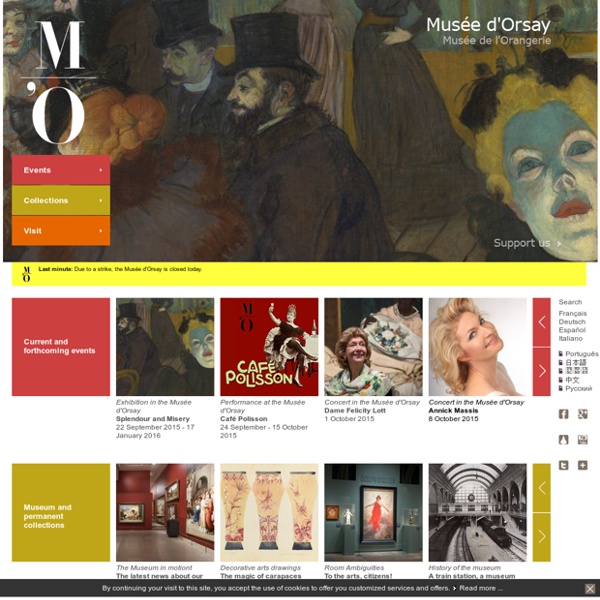



http://www.musee-orsay.fr/en/home.html
Los Angeles County Museum of Art maison européenne de la photographie / ville de Paris La maison Européenne de la Photographie 5/7 Rue de Fourcy - 75004 Paris Metro Ligne 1 | Saint Paul Ligne 7 | Point Marie Ligne 11 | Hotel de Ville Vélib Station n°4010 | 105-109 Terre plein Saint Paul Station n°4011 | 18 rue de l'Hôtel de Ville Station n°4012 | 2 rue Tiron Station n°4015 | 25 rue du Pont Louis-Philippe Bus Rue de Jouy | Bus n° 69 - 79 - 96 - Bb - N11 - N16 Rue Vieille du temple Mairie du 4e | Bus n° 96 Saint Paul | Bus n° 69 - 76 - 96 - Bb - N11 - N16 Parking Parc Baudoyer | Parc Pont Marie | Parc Lobau.
Yoga Yoga (/ˈjoʊɡə/; Sanskrit: योग, Listen) is an Indian physical, mental, and spiritual practice or discipline. There is a broad variety of schools, practices and goals in Hinduism, Buddhism (including Vajrayana and Tibetan Buddhism[2][3][4]) and Jainism.[5][6][7][6] The best-known are Hatha yoga and Raja yoga. The origins of Yoga have been speculated to date back to pre-Vedic Indian traditions, but most likely developed around the sixth and fifth centuries BCE, in ancient India's ascetic circles, which are also credited with the early sramana movements.[note 1] The chronology of earliest texts describing yoga-practices is unclear, varyingly credited to Hindu Upanishads[9] and Buddhist Pāli Canon,[10] probably of third century BCE or later. The Yoga Sutras of Patanjali from first half of 1st millennium CE is one of a key surviving major texts on Yoga.[11][12] Hatha yoga texts emerged around 11th century CE, and in its origins was related to Tantrism.[13][14] Terminology
Louvre Museum Official Website Museum of Art - Rhode Island School of Design Site officiel du musée du Louvre Museo Nacional del Prado MHS - Museum of the History of Science, Oxford - Musée des impressionnismes Giverny Eye Level